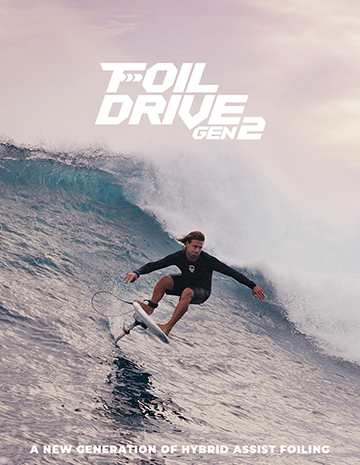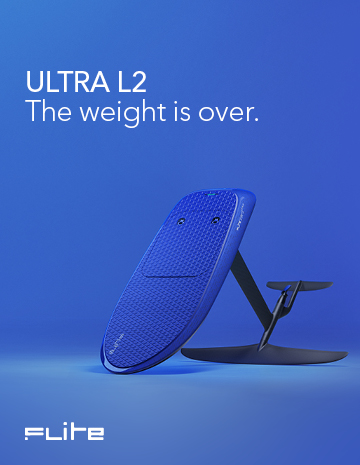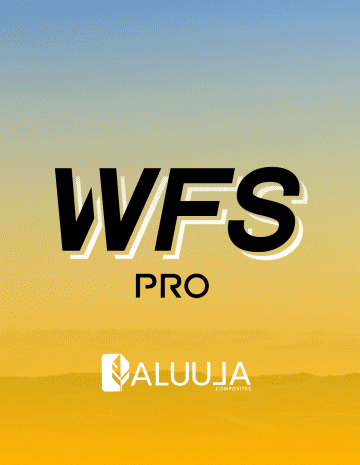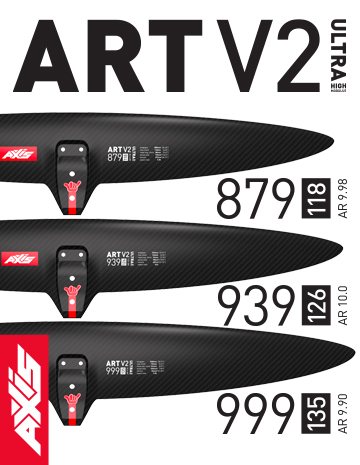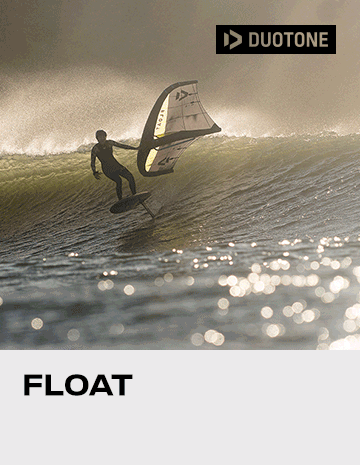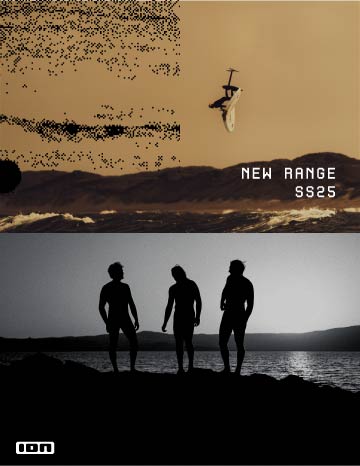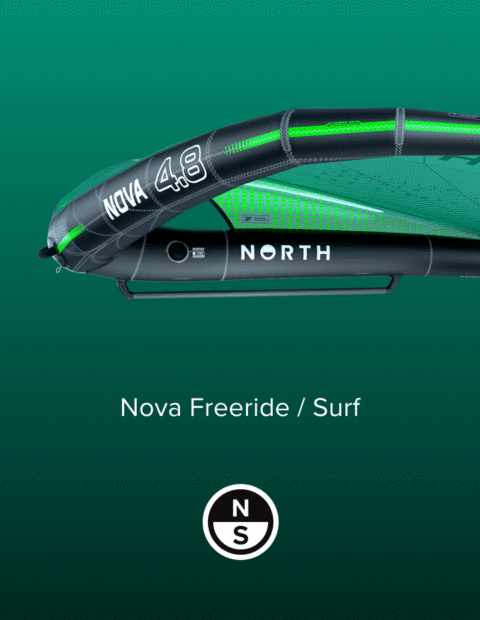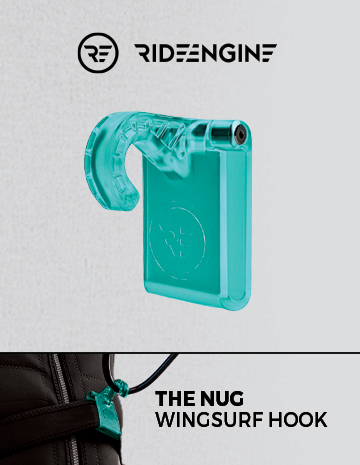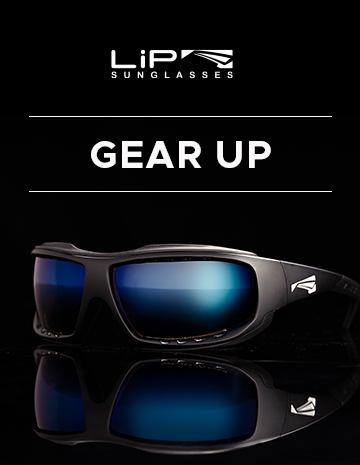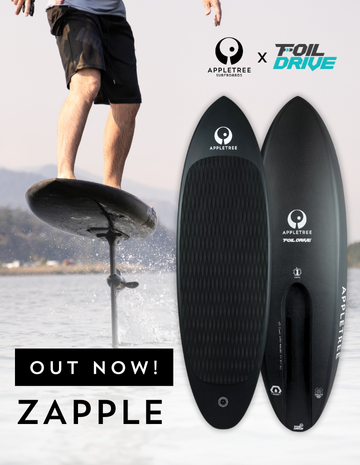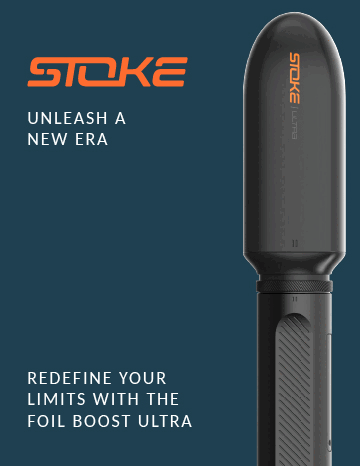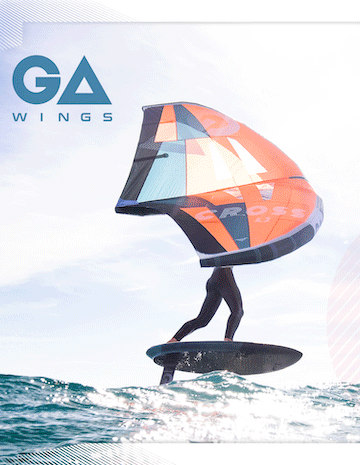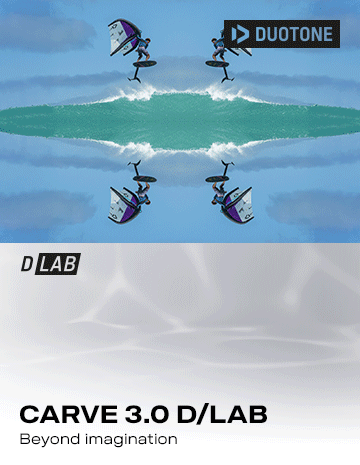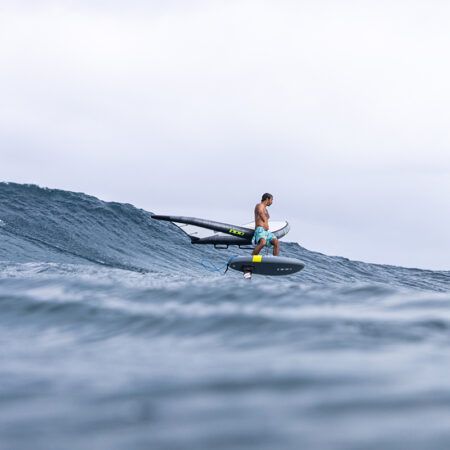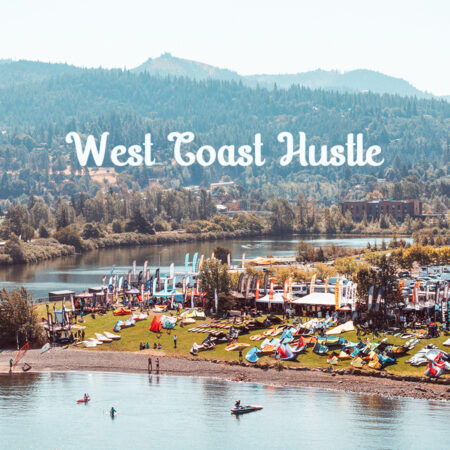Red Letter Day: PASSING SHIPS
Rider & Words: Alexander Reese
Photos: Axel Reese
Location: Bielenburg & Borsfleth, Germany
Date: Sunday August 25th, 2024
The River Elbe – one of Europe’s longest rivers – winds its way through Germany’s rural heartlands until it reaches the thriving industrial metropolis that is Hamburg, which sits just upriver from some of wingfoiler Alexander Reese’s preferred session spots. Dodging the passing maritime traffic is all just part of the fun…

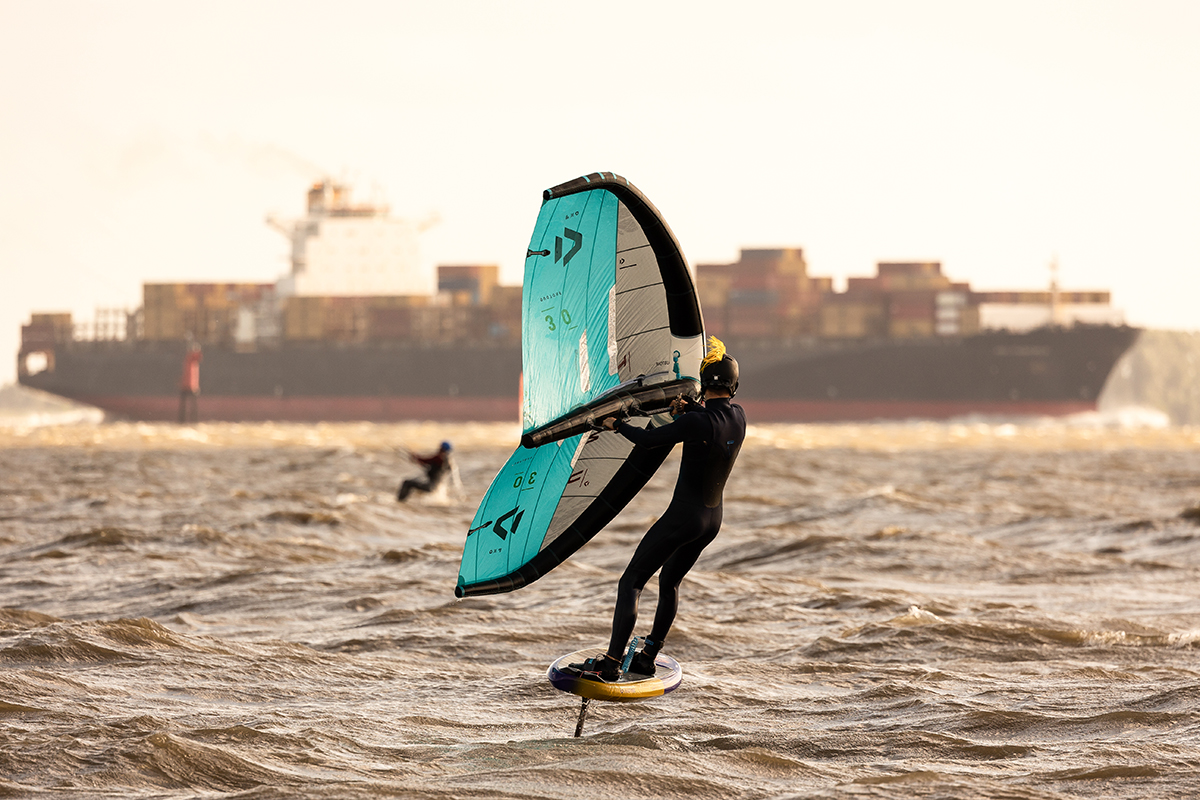 There wasn't much that could have held me back on this Sunday morning. The wingfoil spots along the River Elbe near my hometown of Hamburg promised fantastic conditions: the wind direction was perfect, and the wind was set to strengthen throughout the day, reaching 30 knots by evening!
There wasn't much that could have held me back on this Sunday morning. The wingfoil spots along the River Elbe near my hometown of Hamburg promised fantastic conditions: the wind direction was perfect, and the wind was set to strengthen throughout the day, reaching 30 knots by evening!
My father and I set out early, heading to our first spot, Bielenberg. The Elbe flows directly into the bustling city of Hamburg, home to one of the largest container ports in the world – third largest in Europe, after Rotterdam and Antwerp. Many container ships from Asia pass through the Elbe to reach this massive port in northern Germany, a metropolis of 1.9 million people. And it’s this same river, busy with shipping traffic, that serves as the perfect wingfoiling playground.
In Bielenberg, we snagged a parking spot right at the water’s edge, just three meters from the shore. I pumped up my 5m wing and headed out onto the water. For our photoshoot, I ventured far out on the Elbe, near the passing container ships. Every so often, I got to “enjoy” the turbulence or even the wind shadows cast by these massive vessels. Nowhere else, I imagine, could you get so close to such ships as on the Elbe. Even at 200 meters away, their colossal size makes you feel tiny. These behemoths seem imposing from a distance, but the closer they get, the more they tower over you. While it's important to keep a safe distance, I always enjoy watching them pass by from afar – it adds a unique flavor and variety to being on the water. It’s an awe-inspiring experience when these giant ships appear on the horizon and approach, almost majestically.
Then there is the decommissioned nuclear power plant on the North Sea side, which is also part of the landscape out here. It’s been shut down for two years, as the government has phased out all nuclear power plants in Germany. More and more wingfoilers from Hamburg are flocking to these city spots along the Elbe, drawn by its unique industrial scenery.
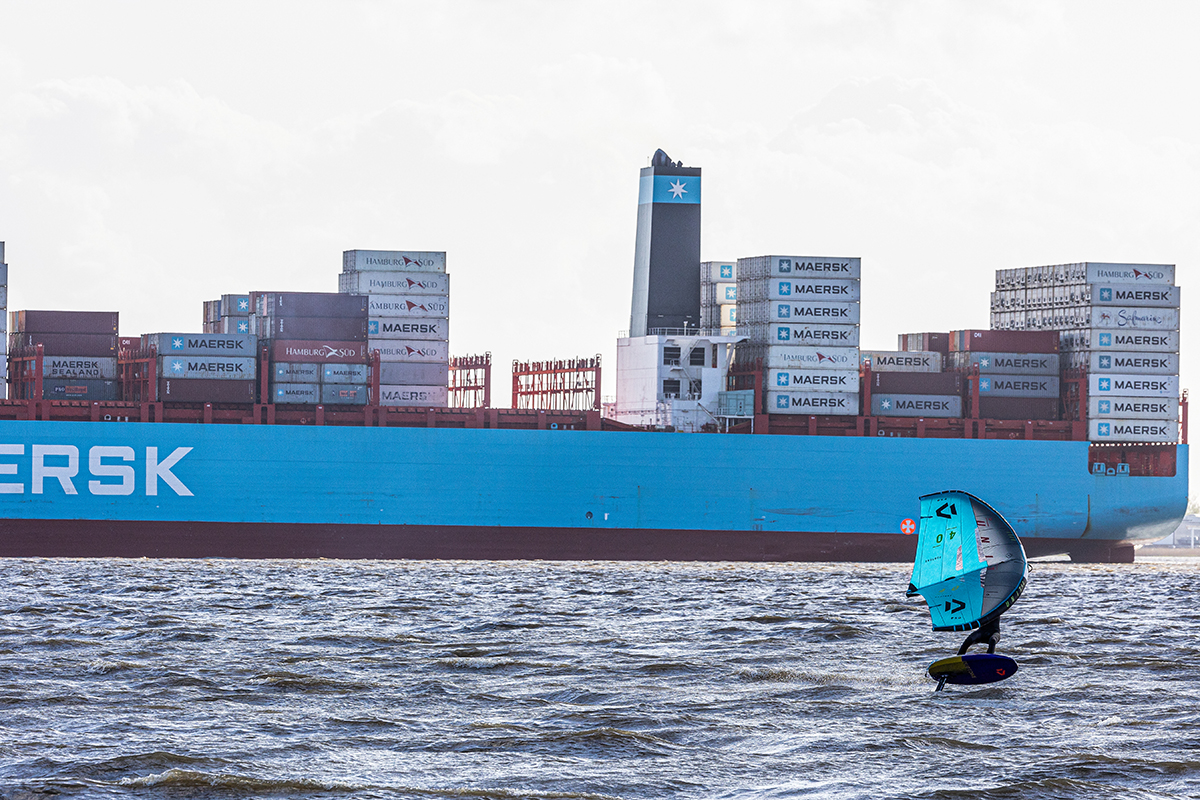

By midday, the wind picked up, creating even better choppy waves – perfect for improving my take-offs. During this session, I focused on nailing the 720. After some practice, I returned to the car to switch to my 4m wing. With the smaller wing, I came even closer to landing the 720, as it’s much easier to handle than the 5m wing. More and more cyclists and joggers gathered along the water’s edge to watch us. After two hours, we took a well-deserved break at the “Strandfloh” bistro, right there on the spot. They make the best fries in all of Hamburg! We enjoyed them with a drink, relaxed, and soaked up the view.
Post-lunch, we headed to our second spot, Borsfleth. The wind continued to strengthen, so I rigged up the 3m wing and set off for my second session of the day, under a brilliant sun. With wind speeds of 30 knots and higher, there were even longer waves to ride! To catch them though, you have to venture further out, where the water is deeper. It’s not uncommon for the waves here to be so long that they rival those in the Baltic or North Seas. Today was one of those special days, the kind that other wingfoilers who haven’t experienced the Elbe might find hard to imagine.
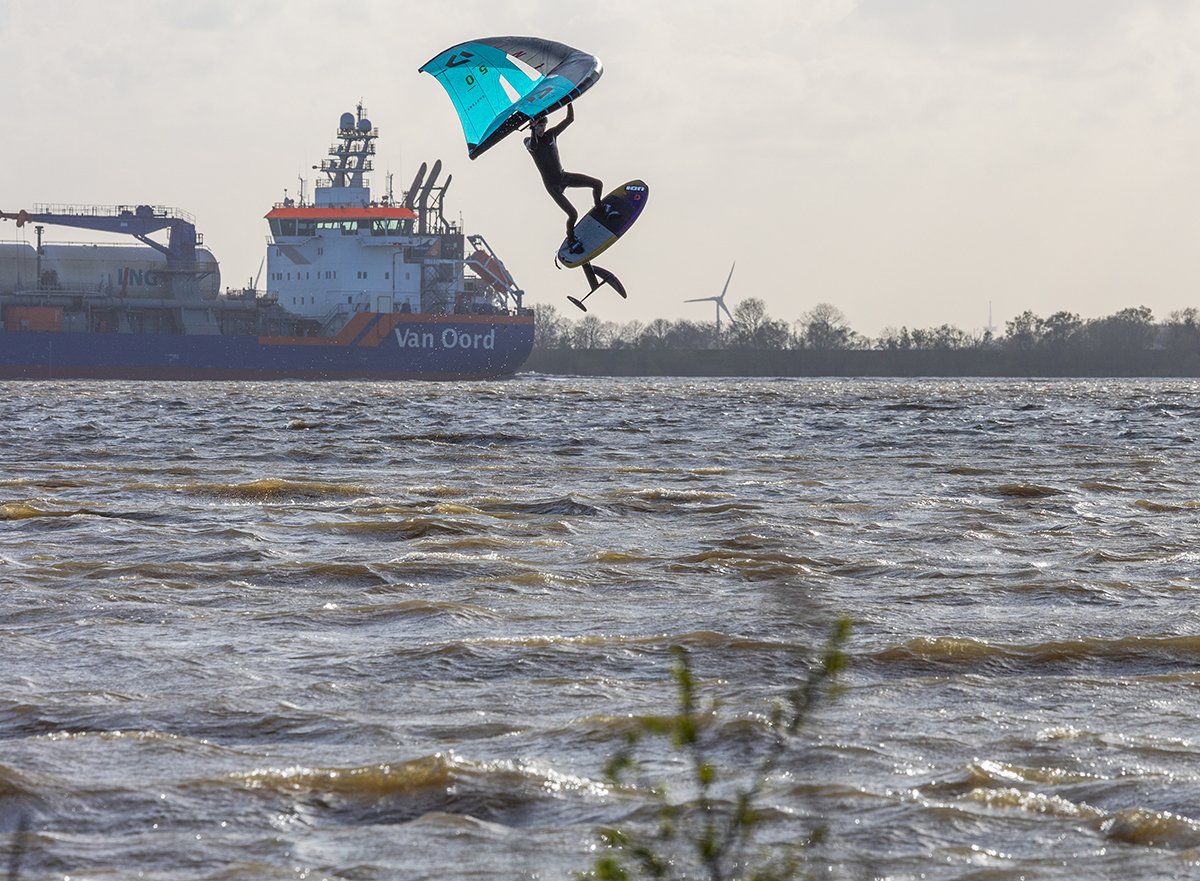

A few of my mates had joined me by now, and we pushed each other to go harder, making the session even more fun. The relatively high tide on the Elbe can create strong currents, but they’re hardly noticeable until you go further out. Many wingfoilers I talk to assume that the strong currents make it impossible to wingfoil on the Elbe, but that’s far from true! The Elbe is actually even suitable for beginners. In addition to plenty of depth for foiling, we always have an onshore wind, which is ideal for learning.
Like spots on the North Sea, our city spots on the Elbe also have tides, so we have to be mindful of high and low tides. At low tide, we might have to walk 100-150 meters to reach enough depth for foiling. We usually aim for 2.5 hours before and after high tide, so we can start foiling right away, without the long walks.
By late afternoon, we took some amazing photos with the huge ships in the background – a true highlight of the day. As the sun dipped toward the horizon, and after six hours on the water, I was completely exhausted. We packed up and headed back to Hamburg.



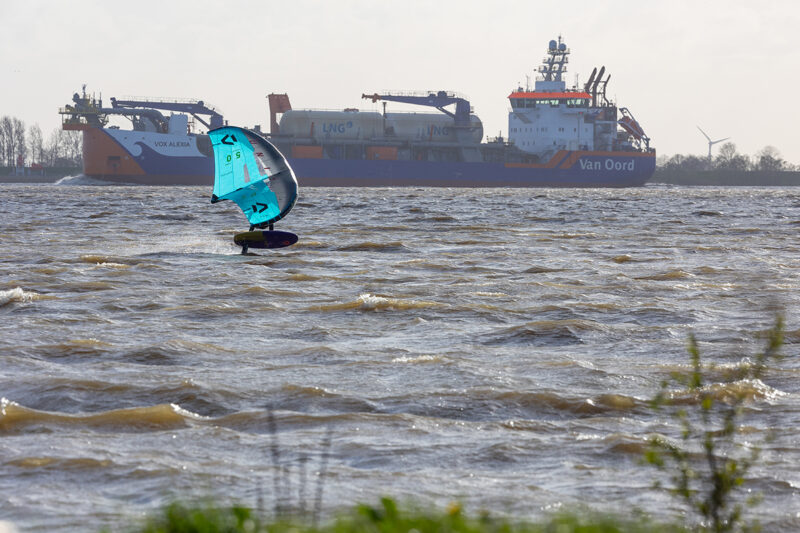

 There wasn't much that could have held me back on this Sunday morning. The wingfoil spots along the River Elbe near my hometown of Hamburg promised fantastic conditions: the wind direction was perfect, and the wind was set to strengthen throughout the day, reaching 30 knots by evening!
There wasn't much that could have held me back on this Sunday morning. The wingfoil spots along the River Elbe near my hometown of Hamburg promised fantastic conditions: the wind direction was perfect, and the wind was set to strengthen throughout the day, reaching 30 knots by evening!




